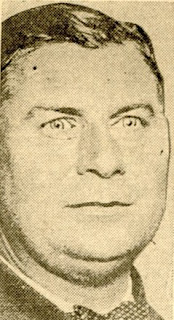On Oct. 3, 1929, 13 people - both guards and inmates - died in a riot and raging fire at the Colorado State Penitentiary in Canon City, and a Catholic priest "dressed for golf" emerged as an unlikely hero through a hail of bullets.
The mutineers set blazes and raided the arsenal, but inmate trusties remained loyal to the warden and manned firehoses.
"Steadily and calmly, while the gun battle raged and during the cessation of firing, the trusties aided firemen to control the fire," The Rocky Mountain News said.
Firefighters from as far as Pueblo reinforced the Canon Fire Department as flames consumed cellblocks, the mess hall, the chapel and prison library.
The violence delayed Canon City fire crews and police from entering the penitentiary grounds.
The Colorado National Guard also arrived.
The struggle to defeat the rioters lasted almost a day.
"The hero of the dynamiting attempts was a Catholic priest. Father Patrick O’Neill, who carried the bombs to the foot of the cell house wall, under cover of machine gun fire from the prison walls," AP said.
O'Neill, 43, was a teacher with no ties to the state penitentiary. There by happenstance, the priest made two dashes from the prison gate, each time carrying 25 pounds of dynamite. He knew nothing about explosives.
In a letter the the editor of Time Magazine, criticizing its coverage of the event, O'Neill told his story, saying: "To view my purpose as one of 'death,' rather than one of mercy to the other 160 men in Cellhouse No. 3 is rank unfairness. Women and children and men too, were scared that night. Action had to be taken; and, since I had no dependants, why I volunteered. This 'hero' stuff is also distasteful to me."
Furthermore, O'Neill wrote: "I was also dressed for golf, and was on my way to the Club, when a young lady told me her Daddy was trapped by the convicts within the Pen. 'Greater love hath no man, than a readiness to lay down his life for them.' That, and that alone was my purpose."
Even so, O'Neill was honored by the Carnegie Hero Find Commission. He lived until age 84, dying in a nursing home in Cullman, Alabama, on Aug. 16 1971, according to a brief obituary published in The New York Times. He was ordained by the Order of St. Benedict in 1915.
Sirs:
A friend has just given me your version of the Prison Episode. I am quite surprised at your unfairness. The terms you use, and the angle you viewed, agree with a certain anonymous threat from Springfield, Mo. My friend demanded that I write you, though, for he claims that your magazine endeavors to be fair and play the game square.
"Burly" is an opprobrious term. To view my purpose as one of ''death," rather than one of mercy to the other 160 men in Cellhouse No. 3 is rank unfairness. Women and children and men too, were scared that night. Action had to be taken; and, since I had no dependants (cq), why I volunteered. This "hero" stuff is also distasteful to me. But I don't care for your readers to have the impression of a Priest wishing death in preference to life.
I am not the Chaplain at the Pen. In fact, I was never in it before, having come to Colorado in September of this year. I am Chaplain at Holy Cross Abbey, and teach Psychology and English. I have been criticised for not going in this Cellhouse and persuading them to give up. Under the circumstances, that was quite impossible. I was also dressed for golf, and was on my way to the Club, when a young lady told me her Daddy was trapped by the convicts within the Pen. "Greater love hath no man, than a readiness to lay down his life for them." That, and that alone was my purpose.
Relying on your American honesty and integrity I beg to remain,
FATHER PATRICK O'NEILL, O. S. B. Canon City, Colo.




No comments:
Post a Comment
Note: Only a member of this blog may post a comment.